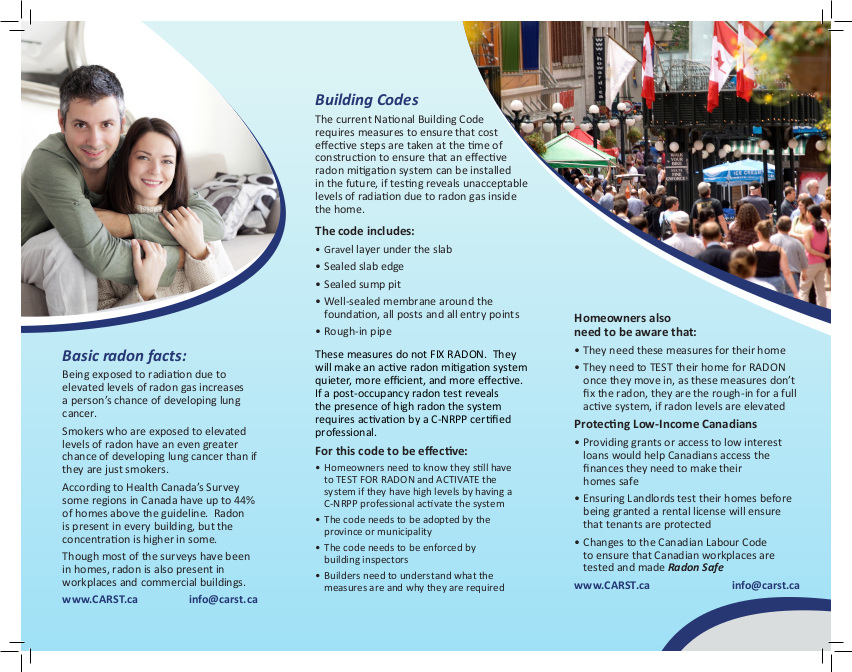
Radon Testing in Winnipeg: Essential Guide for Homeowners
Estimated reading time: 5 minutes
Key Takeaways
- Radon is a colorless, odorless radioactive gas that can pose serious health risks.
- Winnipeg and Manitoba have elevated radon levels due to geological composition.
- Testing for radon is essential for homeowners to protect their families.
- Radon testing can be done through DIY kits or professional services.
- High radon levels can be mitigated by certified professionals.
Table of Contents
Introduction
When it comes to ensuring the safety of your home, radon testing in Winnipeg is an essential step for every homeowner. Radon is a colorless, odorless radioactive gas that originates from the natural decay of uranium in soil and rocks. It enters homes through cracks in foundations, gaps around service pipes, construction joints, and other openings. Prolonged exposure to high levels of radon increases the risk of lung cancer, making it the second leading cause of lung cancer after smoking.
Why Radon Testing is Crucial for Homeowners in Winnipeg and Manitoba
Winnipeg and Manitoba are known for elevated radon levels due to the region’s geological composition. About 24% of Manitobans may be living in homes with radon levels higher than the national guideline. It is crucial for homeowners to be proactive in testing to protect their families.
Understanding Radon
What is Radon?
Radon is a radioactive gas produced naturally that can accumulate in enclosed spaces, especially basements and lower levels of homes. It is undetectable without specialized testing because it is colorless and odorless.
Health Risks Associated with Radon Exposure
Radon decays into radioactive particles that can be inhaled, damaging lung tissue and increasing the risk of lung cancer. A 2019 study in Winnipeg found that 30% of tested homes exceeded Health Canada’s recommended guideline of 200 Bq/m³, while 68% exceeded the World Health Organization’s guideline of 100 Bq/m³.
Importance of Radon Testing
Why Testing is Crucial
Testing is the only way to know if a home has high radon levels, providing peace of mind and preventing long-term health issues. Testing should be prioritized after purchasing a new home, if the home has not been tested in the past five years, or after significant renovations.
How Radon Testing Works
Overview of Radon Testing Methods
There are two primary methods: Do-It-Yourself (DIY) Radon Test Kits and Professional Radon Testing Services. Short-term testing lasts from 2 to 7 days, while long-term testing lasts for at least 90 days and is recommended by Health Canada for accurate results.
Where to Get Radon Testing in Manitoba
Homeowners can choose between DIY Radon Test Kits or Professional Services. DIY kits can be purchased at local hardware stores or online retailers, while professional testers can be found through the Canadian National Radon Proficiency Program (C-NRPP).
Finding Certified Radon Testers in Winnipeg
Hiring certified radon testers ensures accurate results for your home’s radon levels. Health Canada recognizes the C-NRPP as the certification program for qualified professionals.
Who Does Radon Testing Near Me?
Homeowners can find local radon testing services through online directories, local forums, or the C-NRPP website. When choosing a service provider, verify certifications, look for reviews, and inquire about the testing process.
Cost of Radon Testing in Winnipeg
Factors Influencing Cost
The cost of radon testing in Winnipeg depends on the type of test, duration, size of the home, and additional services. DIY test kits range from $30 to $60, while professional testing services cost approximately $150 to $300.
Conclusion
Radon testing is essential for every homeowner to detect high levels of radon and ensure their family’s safety. Don’t delay—schedule radon testing in Winnipeg today to protect your health.
FAQs
- What is Radon and Why is it a Concern in Winnipeg?
Radon is a radioactive gas that poses health risks and is more prevalent in Winnipeg due to geological composition.
- How Often Should I Test My Home for Radon?
Testing every 2-5 years or after renovations is recommended.
- Can I Use a DIY Radon Test Kit Effectively?
Yes, but professional testing may offer more accurate results.
- What Should I Do if My Radon Levels Are High?
Contact a C-NRPP certified radon mitigation professional for solutions.
- Is Radon Mitigation Expensive?
Costs vary, but financing options are available through the Manitoba Hydro Energy Finance Plan.
Additional Tips and Resources
Radon should be tested in the lowest floor of your home where you spend more than four hours per day. Winter months are ideal for testing due to higher indoor radon levels. Useful resources include Health Canada’s radon information and the Canadian National Radon Proficiency Program.
Callouts/Promotional Segments
Receive a 10% discount on professional radon testing services in Winnipeg by mentioning this blog post. SafeHome Radon Testing is your trusted C-NRPP certified professional in Winnipeg.
Focus on User Experience
Structure the content with clear headings, bullet points, and relevant keywords. Encourage homeowners to take action and ensure a smooth reading experience for all.
This comprehensive blog post on radon testing in Winnipeg provides homeowners with essential information to protect their families from the health risks associated with radon exposure. Take action today to ensure your home is safe and secure.